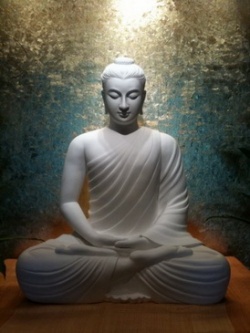Difference between revisions of "The Term 'Silk Road'"
m (Text replacement - "Central Asia" to "{{Wiki|Central Asia}}") |
|||
| Line 1: | Line 1: | ||
[[File:Rcxu.jpg|thumb|250px|]] | [[File:Rcxu.jpg|thumb|250px|]] | ||
| − | + | The term "[[Silk Road]]" was first used for this {{Wiki|ancient}} trade network in 1877. The [[person]] who coined the term "[[Silk Road]]" was the {{Wiki|German}} geographer Ferdinand von Richthofen (who used the {{Wiki|German}} [[word]] "Seidenstrasse," which literally means "[[Silk Road]]"). The term has found its way into general usage in many [[languages]], i.e. "La Route de Soie" in {{Wiki|French}}. | |
| − | The first | ||
| − | + | The {{Wiki|Han Dynasty}} (206 BCE–220 CE) is credited with the [[birth]] of the [[Silk Road]], when {{Wiki|Chinese}} envoys sought to learn the {{Wiki|geography}} of the regions [[beyond]] [[China]]. As a result of their explorations, the {{Wiki|Han Dynasty}} opened-up to trade with the territories [[west]] of [[China]]. However, modern-day global transportation and communications are also indebted to all peoples who for centuries were part of the intermingling of cultures along the [[Silk Routes]], as demonstrated by the worldwide impact of the {{Wiki|Silk}} Road's rich {{Wiki|civilizations}}, [[scientific]] achievements, discoveries, and living legacies of arts and architecture. | |
| − | |||
| − | |||
| − | + | Traders exchanged such items as {{Wiki|silk}}, which was especially important to the Romans, ceramics, glass, [[precious]] metals, ivory, [[gems]], {{Wiki|medical}} herbs, exotic [[animals]], and livestock on the {{Wiki|Silk Road}}. Inadvertently, the {{Wiki|Silk Road}} transmitted [[language]], {{Wiki|disease}}, and genes. Alliances were forged to fight against common enemies. [[Buddhism]] made use of the {{Wiki|Silk Road}} in its spread to {{Wiki|Central Asia}} and [[China]]. {{Wiki|Manichaeism}} and {{Wiki|Islam}} also spread along the routes. The road, a series of caravan routes with trading posts and oases, extended almost 7000 {{Wiki|miles}} from {{Wiki|Rome}} and Syria to the {{Wiki|Yellow River}}, in [[China]], and lasted from about the {{Wiki|Han Dynasty}} in the 2nd century B.C. to the 14th A.D. by which [[time]] sea routes were replacing the {{Wiki|Silk Road}}s. | |
| − | + | {{R}} | |
| + | [http://chinaturkey.info/DefinitionHistorySilkRoad.htm chinaturkey.info] | ||
| − | + | [[Category:Silk Road]] | |
| − | |||
| − | |||
| − | |||
| − | |||
| − | |||
| − | |||
| − | |||
| − | [[Category: | ||
Revision as of 13:40, 30 October 2013
The term "Silk Road" was first used for this ancient trade network in 1877. The person who coined the term "Silk Road" was the German geographer Ferdinand von Richthofen (who used the German word "Seidenstrasse," which literally means "Silk Road"). The term has found its way into general usage in many languages, i.e. "La Route de Soie" in French.
The Han Dynasty (206 BCE–220 CE) is credited with the birth of the Silk Road, when Chinese envoys sought to learn the geography of the regions beyond China. As a result of their explorations, the Han Dynasty opened-up to trade with the territories west of China. However, modern-day global transportation and communications are also indebted to all peoples who for centuries were part of the intermingling of cultures along the Silk Routes, as demonstrated by the worldwide impact of the Silk Road's rich civilizations, scientific achievements, discoveries, and living legacies of arts and architecture.
Traders exchanged such items as silk, which was especially important to the Romans, ceramics, glass, precious metals, ivory, gems, medical herbs, exotic animals, and livestock on the Silk Road. Inadvertently, the Silk Road transmitted language, disease, and genes. Alliances were forged to fight against common enemies. Buddhism made use of the Silk Road in its spread to Central Asia and China. Manichaeism and Islam also spread along the routes. The road, a series of caravan routes with trading posts and oases, extended almost 7000 miles from Rome and Syria to the Yellow River, in China, and lasted from about the Han Dynasty in the 2nd century B.C. to the 14th A.D. by which time sea routes were replacing the Silk Roads.
